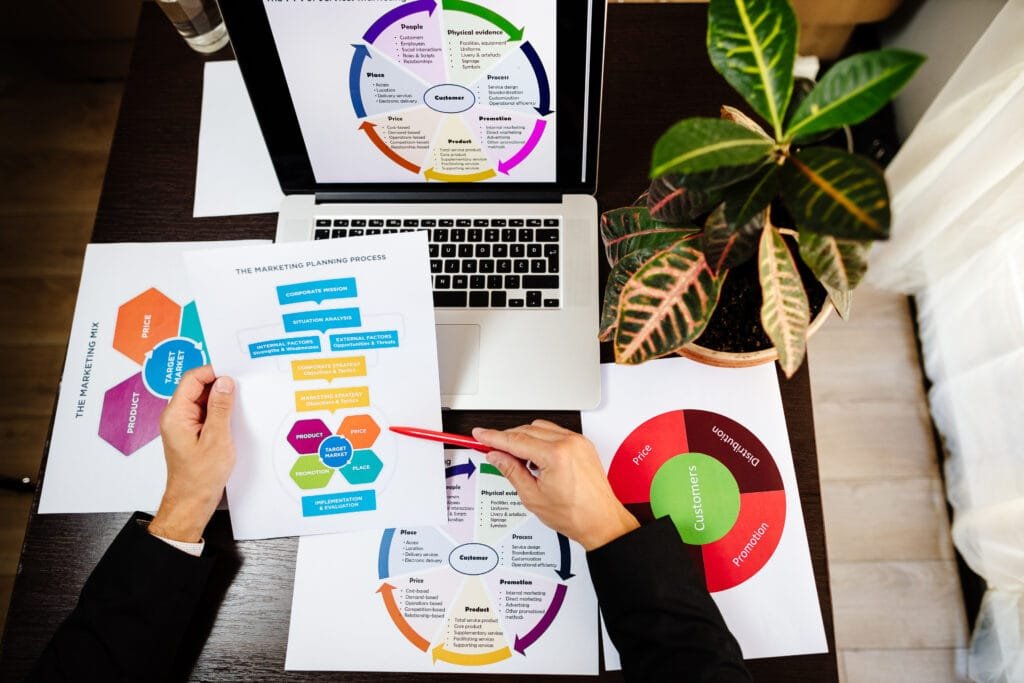
Table of Contents

In today’s fast-paced digital world, capturing a customer’s attention is just the beginning. What happens next? That’s where lifecycle marketing comes into play. Imagine having a roadmap that guides your customers from their first interaction with your brand to becoming loyal advocates. This approach not only nurtures relationships but also maximizes value at every stage of the journey.
Lifecycle marketing focuses on understanding each phase of the customer experience and crafting tailored strategies for engagement along the way. Whether you’re looking to convert leads or retain existing customers, mastering this technique can elevate your business to new heights. Let’s dive into what lifecycle marketing truly means and explore effective strategies that can transform how you connect with your audience at every touchpoint.
What is Lifecycle Marketing?
Lifecycle marketing is a strategic approach designed to engage customers at each phase of their journey with your brand. It encompasses all interactions, from initial awareness to long-term loyalty.
At its core, lifecycle marketing focuses on understanding the needs and behaviors of customers throughout different stages. By identifying these phases, businesses can create targeted campaigns that resonate with audiences effectively.
This method goes beyond one-time transactions. It aims to build lasting relationships by nurturing leads into loyal advocates over time. Each stage requires specific tactics tailored to encourage progression along the customer journey.
The beauty of lifecycle marketing lies in its adaptability. As customer preferences change, so do the strategies employed—ensuring relevance and engagement remain constant.
The Five Stages of the Customer Lifecycle
The customer lifecycle consists of five essential stages that define a buyer’s journey. Each stage requires tailored strategies for effective engagement.
First, there’s the Awareness Stage. Here, potential customers discover your brand and its offerings. This initial interaction often happens through ads or organic search results.
Next comes the Consideration Stage. At this point, prospects evaluate various options available to them. They seek more information about features and benefits.
Following consideration is the Purchase Stage. Customers are ready to make a decision and complete their transaction with you.
After purchasing, clients enter the Retention Stage. Businesses focus on nurturing these relationships to encourage repeat purchases and loyalty.
We have the Advocacy Stage where satisfied customers become brand ambassadors. They share their positive experiences with others, driving new leads into your funnel.
Strategies for the Awareness Stage
At the awareness stage, your goal is to capture attention. Customers are just discovering their needs and exploring options. This is where effective lifecycle marketing begins.
Content marketing plays a crucial role here. Create informative blog posts, engaging videos, or infographics that address common pain points your audience faces.
Utilizing social media can also elevate your brand visibility. Share insights and interact meaningfully with potential customers. Building a community around your brand fosters trust.
Search engine optimization (SEO) is vital too. Use targeted keywords related to what you offer so that potential clients find you easily online.
Don’t overlook paid advertising strategies like PPC campaigns on platforms relevant to your audience. These can drive traffic effectively during initial stages of the customer journey.
The aim is simple: position yourself as an authority in solving problems while drawing potential customers closer to engagement with your brand’s solutions.
Strategies for the Consideration Stage
At the consideration stage, potential customers are evaluating options. Your goal is to stand out and address their specific needs.
Content marketing plays a pivotal role here. Create informative blog posts and videos that answer common questions about your products or services. This builds trust and positions you as an authority in your field.
Utilize email marketing as well. Send targeted emails with personalized recommendations based on their previous interactions. This shows that you understand their preferences.
Leverage social proof too. Share customer testimonials and case studies that highlight success stories related to your offerings. Real-life experiences resonate deeply with prospects during this phase.
Consider offering free trials or demos if applicable. This allows customers to experience the value of your product firsthand, making them more likely to convert when they’re ready for purchase decisions.
Strategies for the Purchase Stage
At the purchase stage, customers are on the brink of making a decision. This is where you need to seal the deal with effective strategies.
First, create a seamless and user-friendly checkout process. A complicated or lengthy procedure can deter even the most eager buyers.
Second, offer limited-time discounts or exclusive offers that instill urgency. Customers respond positively when they feel they’re getting something special.
Third, utilize social proof such as testimonials or reviews prominently during this phase. Highlighting positive experiences from previous buyers builds trust and reinforces their decision to buy.
Consider upselling or cross-selling related products at checkout. Suggestive selling can enhance their experience while increasing your average order value.
Engaging them at this critical moment makes all the difference in turning interest into action.
Strategies for the Retention Stage
Retention is all about keeping your customers engaged and satisfied. At this stage, personalized communication plays a pivotal role. Tailor your messages to address individual needs and preferences.
Loyalty programs can be incredibly effective here. Offer rewards that resonate with your audience—discounts, exclusive content, or early access to products can encourage repeat business.
Another strategy involves regular check-ins through email campaigns or social media interactions. These touchpoints demonstrate that you value their relationship beyond the initial sale.
Feedback loops are crucial as well. Ask for reviews and suggestions; it shows you care about improvement while allowing customers to feel heard.
Provide exceptional customer service at every opportunity. Quick responses and solutions create trust and ensure they choose you again in the future.
Strategies for the Advocacy Stage
At the advocacy stage, your customers are already fans of your brand. Now is the time to turn their enthusiasm into active support. Encourage them to share their experiences on social media or leave positive reviews.
Create a referral program that rewards customers for bringing in new business. Offering discounts or exclusive access can motivate them to spread the word about your products or services.
Engage with advocates through personalized email campaigns. Share content that highlights their contributions and showcases how much you value their support.
Invite these loyal customers to participate in focus groups or product testing sessions. This not only makes them feel special but also gives you valuable insights into improving your offerings.
Host events or webinars where they can connect with other like-minded individuals, strengthening community ties around your brand.
The Importance of Personalization in Lifecycle Marketing
Personalization is the heartbeat of effective lifecycle marketing. It transforms generic messaging into tailored experiences that resonate with each customer. When brands understand their audience’s preferences, interests, and behaviors, they can craft messages that speak directly to individual needs.
This approach not only enhances engagement but also builds trust. Customers are more likely to respond positively when they feel understood and valued. Tailored content showcases a brand’s commitment to meeting specific requirements.
Furthermore, personalized strategies drive higher conversion rates across all stages of the online customer lifecycle. Whether through customized email campaigns or targeted advertisements, personalization creates a sense of relevance that encourages action.
Additionally, leveraging data analytics allows businesses to continually refine these personal touches. By analyzing user interactions and feedback, companies can adapt their tactics in real time—maintaining strong connections throughout every phase of the customer journey.
Case Studies on Successful Lifecycle Marketing Campaigns
One standout example of effective lifecycle marketing is Starbucks’ rewards program. By utilizing personalized offers and tracking customer preferences, they successfully engage users at every stage. The result? Increased loyalty and higher purchase frequency.
Another impressive case comes from HubSpot. They crafted targeted email campaigns that addressed the different stages of the online customer lifecycle. This approach not only educated leads but also nurtured them into making informed decisions.
Nike employs a robust strategy as well, leveraging its app to provide tailored content based on user activity and interests. This level of personalization keeps customers engaged long after their initial purchase.
These businesses demonstrate how strategic lifecycle campaigns can drive engagement and foster lasting relationships with consumers by understanding their needs at each phase.
Conclusion: Why You Need to Implement Lifecycle Marketing in Your Business
Implementing lifecycle marketing in your business is not just an option; it’s a necessity. As consumer behavior continues to evolve, understanding the online customer lifecycle becomes increasingly crucial. By engaging customers at every stage—from awareness through advocacy—you can create stronger relationships and drive sales.
Lifecycle campaigns allow you to tailor your messaging based on where a customer is in their journey. This personalization fosters loyalty and encourages repeat purchases. Brands that effectively implement these strategies see tangible results—higher conversion rates, improved retention, and increased brand advocates.
When considering what is customer lifecycle marketing, think of it as a roadmap for guiding customers from initial interest all the way to becoming vocal supporters of your brand. It’s about creating meaningful interactions that resonate with them personally.
The power of this approach lies not only in its ability to nurture existing relationships but also in attracting new ones by showcasing how well you understand your audience’s needs at different points along their journey.
With compelling lifecycle marketing examples demonstrating success across various industries, there has never been a better time to integrate this strategy into your operations. Embrace the full potential of lifecycle marketing, and watch as it transforms both customer experience and business growth.
⚠️ DISCLOSURE ⚠️
Marketing Disclaimer, this website is for informational purpose only and cannot and should not be relied upon to digital marketing or tips any advertising advice. Please be aware, should be hire or consult to digital marketing and advertising professional. Learn more



